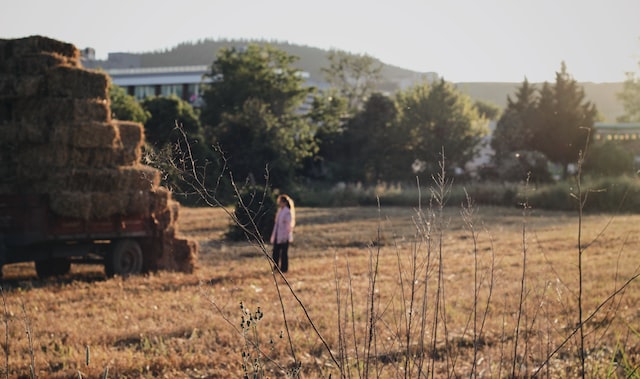Picture from Unsplash
While well-preserved hay stacks can last longer, they require proper and adequate storage mechanisms to retain their value and use. Proper storage means understanding all types of hay products and developing a proper preservation method void of any safety threats. This article is to guide you on the steps on how to preserve your hay stacks for the fall.
Leave Space for Airflow
Loosely stack your hay products and, at the same time, keep the stacks together without any chance of falling. Ensure you leave enough space of about three feet between each stack for unrestricted airflow. Airflow also reduces moisture buildups within the hay. You can construct cupolas or vents to increase ventilation in your hay storage facility.
Also, you can use pellets to stack your hay for adequate airflow beneath the pile. This way, you can easily control moisture buildup and mold growth. You should also leave space at the ceiling of your storage. Avoid stacking hay up to the ceiling to minimize the chance of fire breakouts. Secure your storage facility with fire extinguishers.
Improper ventilation leads to the formation of mold and excess moisture, which affects the quality of your hay. Mold in hay can easily cause a respiratory condition known as colic. This health condition causes death to your unborn foals. If your hay stacks are affected by mold, dispose of them without feeding them to your cattle.
Keep Your Stack Shorter
Typically, hay bales are heavy enough to pause a danger to your livestock or even to you. Keep your stack shorter to prevent falling, leading to serious injury. By not stacking your hay tightly together, the chances of them collapsing are nearly 100 percent. Taller hay piles are susceptible to moisture at the bottom layer. Therefore, before you stack putting your hay together, ensure the height is even and stable.
The upward stacking of hay should have a pyramid-type shape with more hay on the base and less on the top. This design creates a more stable stack with almost zero possibility of collapsing. Use traps to support your hay and prevent stacks from falling. Always keep close monitoring of your hay stacks and prevent any falling.
Store Hay Indoors
Avoid stacking in sunlight due to the inflammability of hay. Direct sunlight is a catalyst of spontaneous combustion. Any contact with heat can quickly cause a fire with moisture within the piles. To reduce hazards, you can opt to construct your store using hay tarps and cover your hay away from any bacteria growth.
Indoor storages protect your hay from adverse weather conditions such as rain, wind, and cold temperatures. Storing hay outdoors exposes them to direct sunlight rays, making them grow mold because of adequate moisture. Heavy dew during winter can slow the drying time for your hay. Besides, leaving your hay in an open place exposes your stacks to leaching- which leads to losing vital nutrients and minerals.
However, if your hay storage has some open sides or is in a shed with only the roof, seal the well-stacked hay using a tarp to protect them from adverse weather conditions. Secure the tarps with strong tie-downs against any instability.
Conduct Regular Inspections
Regular monitoring of your hay stacks helps detect any dangers, such as mold growth and leaking roofs. During the inspections, you may encounter moldy hay, which is usually darker than fresh hay. Another way of detecting moldy hay is through smell, and in case the smell is musty or sour, then that stack should be discarded. You may also touch the hay to feel any dampness. Don’t feed your horse any damp hay.
Keeping a close check on your storage helps seal any leakage that might allow rain into the hay stacks. Rain encourages the growth of mold and mycotoxin, endangering the health of your livestock. Unbelievably, baled wet hay can efficiently combust due to high temperatures from microbial growth. In any case of any leaking from the roof or hay tarps, seek immediate repair and clear affected hay.
Generally, proper storage of hay products gives food security to your livestock. Always take precautions when stacking your hay. Ensure you wear protective leather gloves for maximum protection against hay scratches. Hay stacks should be stored in an environment free of moisture and mold growth. Moldy hay puts the health of your livestock in danger.
Apart from this, If you want to know about Send large files for free with G Suite then please vsit our Featured category











